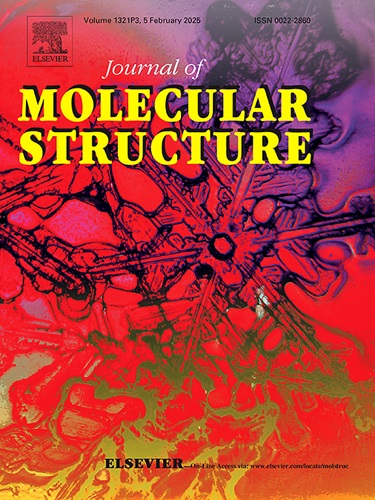Synthesis of pincer rare-earth metal chlorides bearing indol-2-yl motifs with nonsymmetrical hard and soft appendant side arms and their catalytic applications
IF 4
2区 化学
Q2 CHEMISTRY, PHYSICAL
引用次数: 0
Abstract
Two types of pincer rare-earth metal chlorides bearing indolyl backbone and appendant by hard and soft side arms of OP-, NP- chelated groups were synthesized by the metathesis reactions between corresponding lithium compounds (Li-L1 = [(1-(CH3OCH2CH2)-3-(Ph2PCH2)C8H4N)]2Li2, Li-L2 = [(1-(2-(CH2)4NCH2CH2)-3-(Ph2PCH2)C8H4N)]2Li2) and rare-earth chlorides RECl3. NMR and X-ray diffraction analyses revealed that the chlorides (REL2Cl2Li(THF)n, n = 2 for 2, n = 1 for 3) are heteronuclear bimetal complexes with two ligands chelating the RE3+ ions and Cl- bridging RE3+ and Li+. Complex 2 adopts a homoleptic κ3OCP ligation mode with a coordination number of 8. While complex 3 possesses an uneven κ3NCP/κ2CP coordination mode, thus generating a seven-coordinate metal center. The catalytic activity of these complexes towards isoprene polymerization reveals that ionic radii and substituents on the ligands greatly affect their catalytic performances and stereoselectivity of the resulting polymers. Amongst, the gadolinium complexes cooperating with cocatalysts display the best catalytic performance among the surveyed catalytic systems.

非对称软硬双侧臂含吲哚-2基基稀土金属氯化物的合成及其催化应用
通过相应的锂化合物(Li-L1 = [(1-(CH3OCH2CH2)-3-(Ph2PCH2)C8H4N)]2Li2, Li-L2 = [(1-(2-(CH2)4NCH2CH2)-3-(Ph2PCH2)C8H4N)]2Li2)与稀土氯化物RECl3之间的复分解反应,合成了两种具有吲哚基主链和OP-、NP-螯合基团软硬侧臂附属物的钳形稀土金属氯化物。核磁共振和x射线衍射分析表明,氯化物(REL2Cl2Li(THF)n,对2的n = 2,对3的n = 1)是由两个配体螯合RE3+离子和Cl-桥接RE3+和Li+的异核双金属配合物。配合物2采用同眠性κ3OCP连接模式,配位数为8。配合物3具有不均匀的κ3NCP/κ2CP配位模式,形成七坐标金属中心。这些配合物对异戊二烯聚合的催化活性表明,配体上的离子半径和取代基对其催化性能和聚合物的立体选择性有很大影响。其中,与助催化剂配合的钆配合物在所研究的催化体系中表现出最好的催化性能。
本文章由计算机程序翻译,如有差异,请以英文原文为准。
求助全文
约1分钟内获得全文
求助全文
来源期刊

Journal of Molecular Structure
化学-物理化学
CiteScore
7.10
自引率
15.80%
发文量
2384
审稿时长
45 days
期刊介绍:
The Journal of Molecular Structure is dedicated to the publication of full-length articles and review papers, providing important new structural information on all types of chemical species including:
• Stable and unstable molecules in all types of environments (vapour, molecular beam, liquid, solution, liquid crystal, solid state, matrix-isolated, surface-absorbed etc.)
• Chemical intermediates
• Molecules in excited states
• Biological molecules
• Polymers.
The methods used may include any combination of spectroscopic and non-spectroscopic techniques, for example:
• Infrared spectroscopy (mid, far, near)
• Raman spectroscopy and non-linear Raman methods (CARS, etc.)
• Electronic absorption spectroscopy
• Optical rotatory dispersion and circular dichroism
• Fluorescence and phosphorescence techniques
• Electron spectroscopies (PES, XPS), EXAFS, etc.
• Microwave spectroscopy
• Electron diffraction
• NMR and ESR spectroscopies
• Mössbauer spectroscopy
• X-ray crystallography
• Charge Density Analyses
• Computational Studies (supplementing experimental methods)
We encourage publications combining theoretical and experimental approaches. The structural insights gained by the studies should be correlated with the properties, activity and/ or reactivity of the molecule under investigation and the relevance of this molecule and its implications should be discussed.
 求助内容:
求助内容: 应助结果提醒方式:
应助结果提醒方式:


